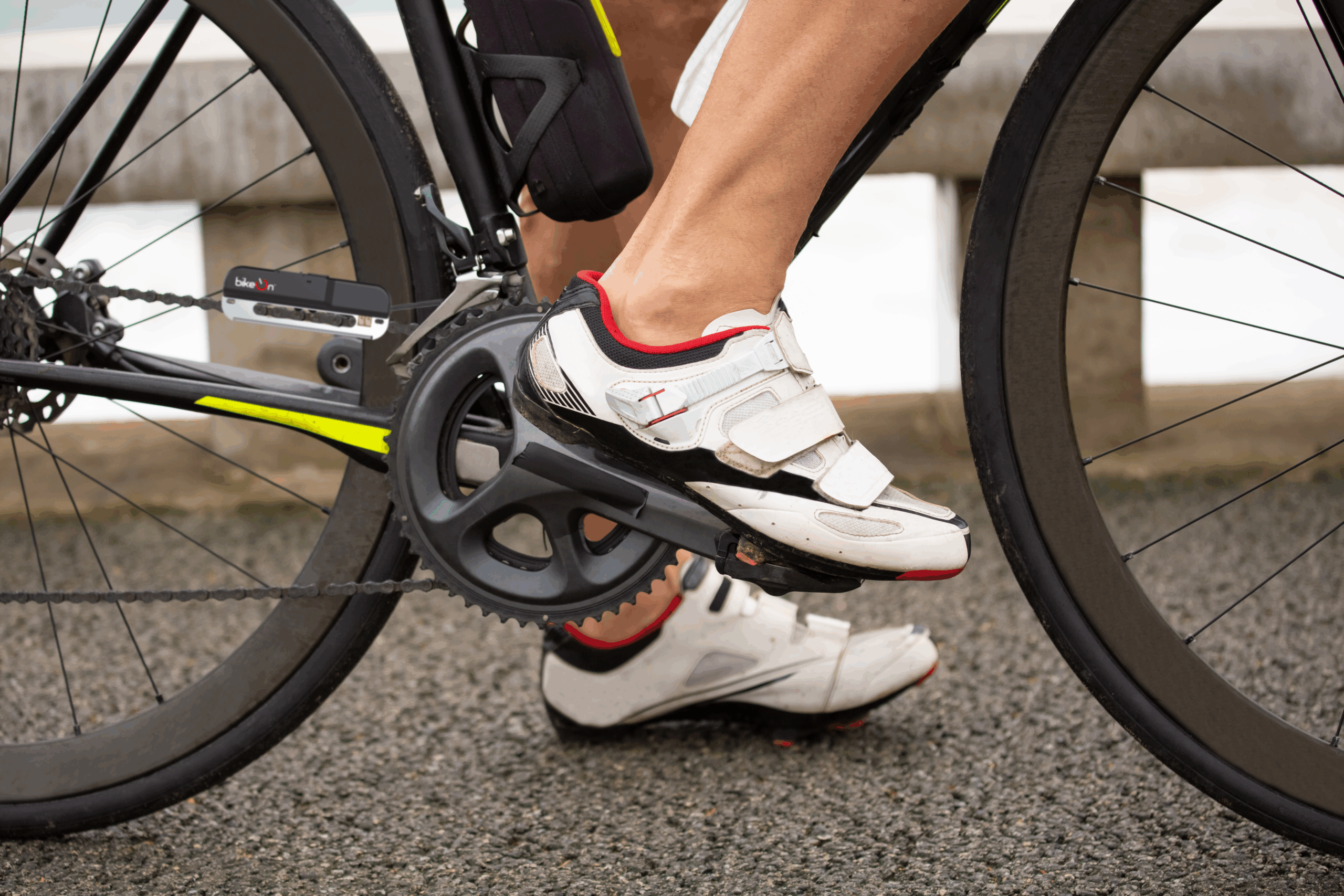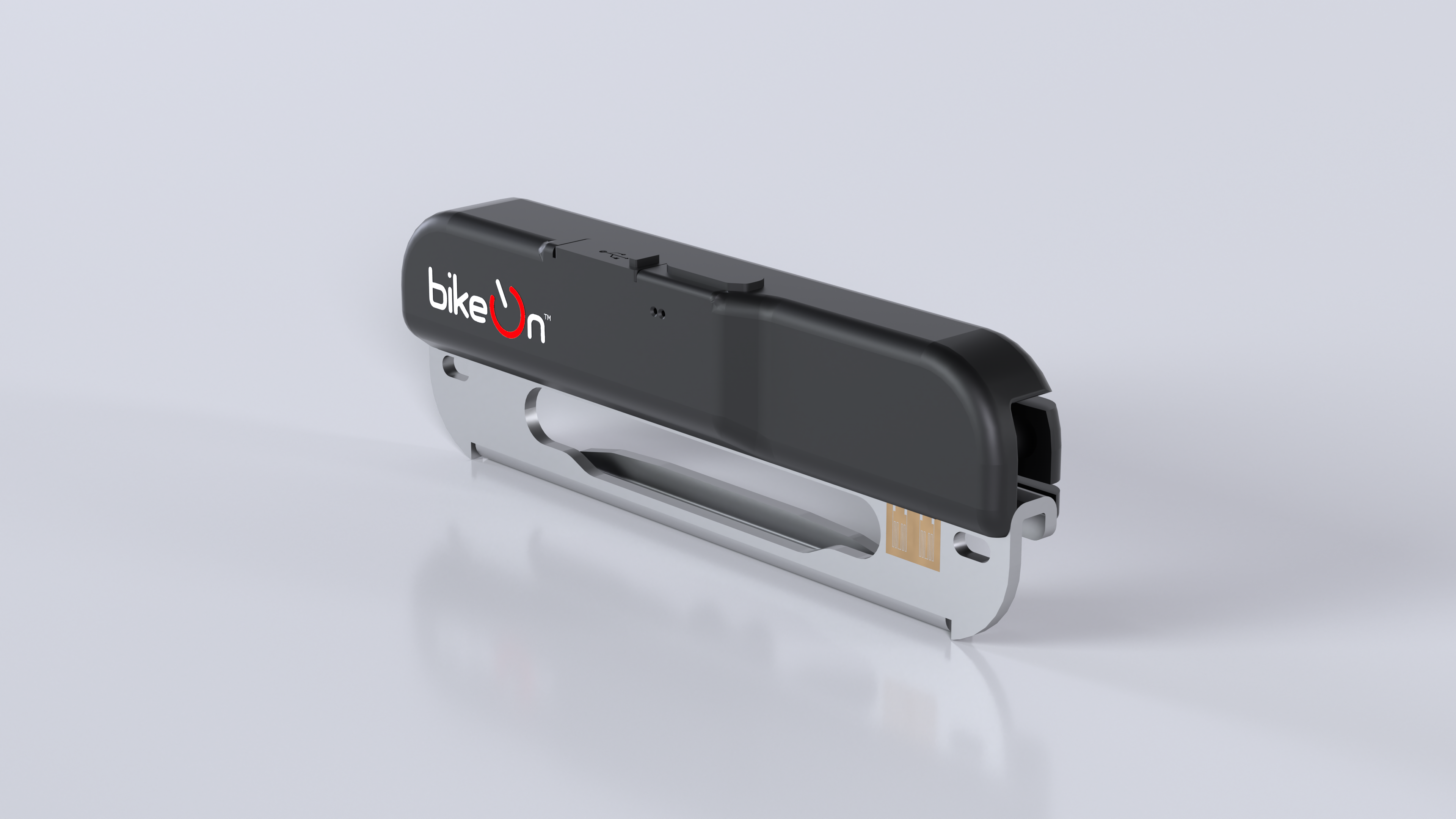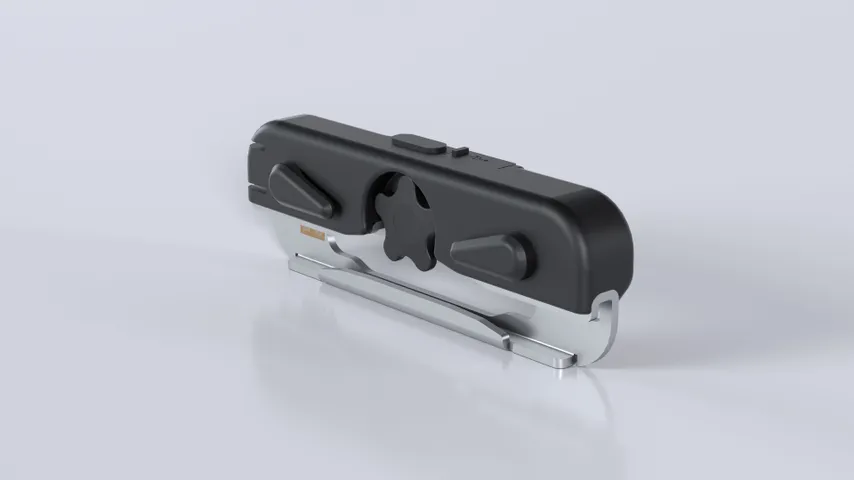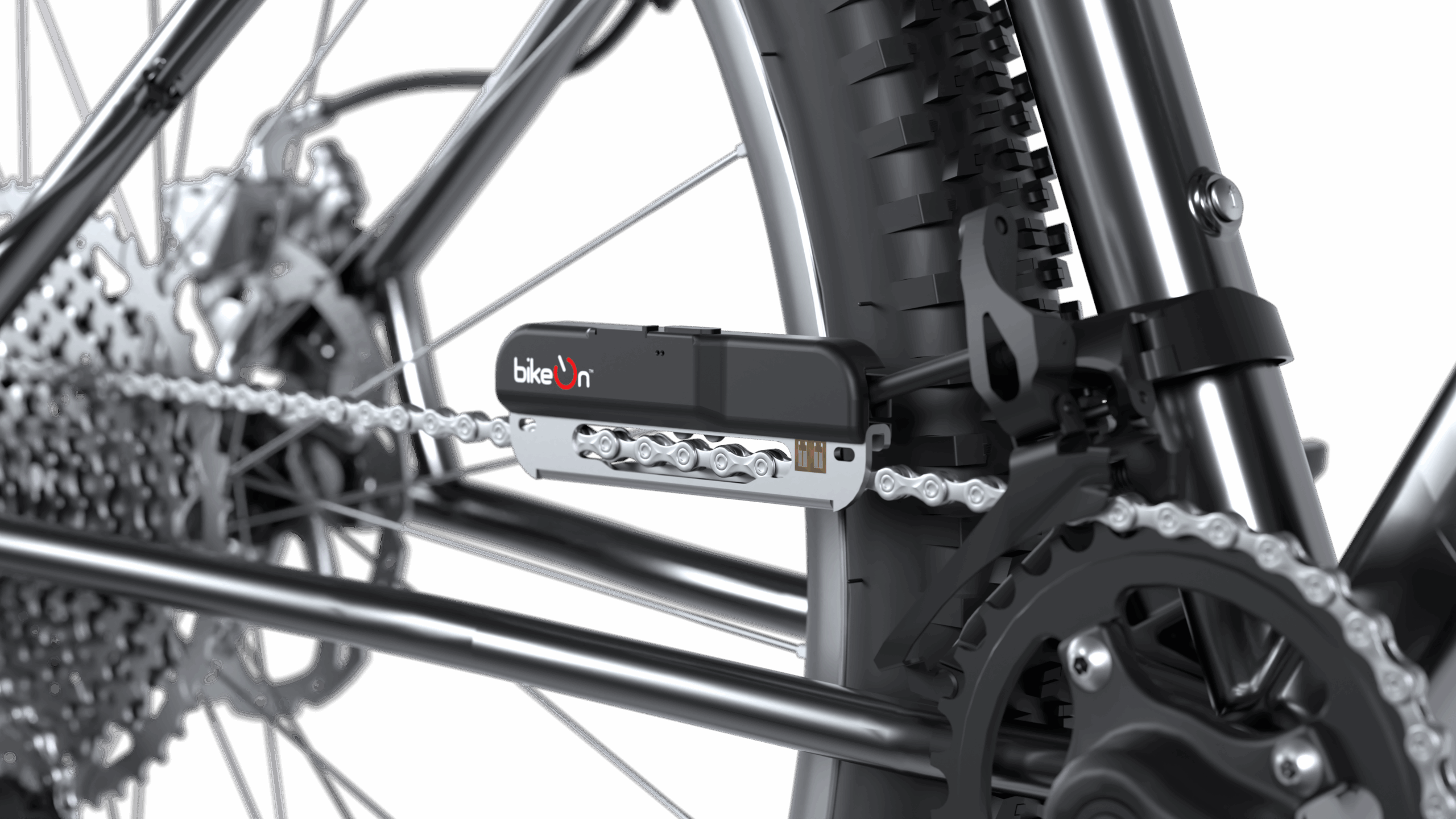BikeOn is shaking up the power meter world with the launch of CycleClick, a compact, clip-on device that claims pro-level power metrics with no tools, no crank swaps, no fuss. What’s the catch? It’s a wild design that connects to the chain and pulls all the data from the movement of the chain itself.

Why would this be better than any power meter on the market? The largest selling point for the CycleClick is that it installs in seconds (their words, not ours), it’s fairly inexpensive (around $299), and it claims to work on any bike with a chain. Other bonuses include connections via Bluetooth to Garmin, Wahoo, and compatible apps like Strava, Zwift, and TrainingPeaks. That alone makes it one of the most accessible, plug-and-play power meters we’ve seen.

CycleClick: What is it?
At its core, CycleClick is all about simplicity without needing tons of base knowledge to enjoy. Integrated strain gauges with temperature compensation measure chain torque directly, while a high-speed chain sensor (~100 Hz) capturing cadence and speed with no additional hardware. From power output (Watts) to balance metrics (L/R power distribution, optional with a small magnet), CycleClick claims to offer a comprehensive view of your ride in real time.

“We built CycleClick because we believe powerful cycling data shouldn’t be locked behind expensive gear or complex setups. Whether you’re chasing a race goal or just want to understand your performance better, CycleClick delivers pro-level metrics — snap it on, ride, and see your effort instantly.” – BikeOn CTO Aram Novikov.

What Metrics Will You See?
CycleClick will measure common power metrics like:
- Cadence (RPM): How fast your legs spin.
- Torque (Nm): The exact force applied per pedal stroke.
- Power Output (Watts): Combines torque and cadence to quantify your effort.
- Balance Metrics (L/R Power Distribution): Shows power symmetry, proper for rehab, fit, or optimizing pedaling technique. (It’s not clear how they are measuring this metric)

How Does It Work?
CycleClick is built for any chain-driven bike (sorry, belt drivers). The device snaps onto the chain with a secure retention arm and built-in chain guards. That means no tools, no sizes for different bikes, no pedals or cranks to swap, and no calibration required.

Inside the device is a small cog that is driven by the chain and seems to be the main source of power measurement. BikeOn claims this is nearly drag-free, but it is hard to believe it wouldn’t impart some level of drag, especially as it gets dirty. It is supposedly compatible with all chain-driven bikes, no matter the chain width.
The other part of the design that is crucial is the ability to move with the chain. The chain changes position as it moves up and down the cassette, or changes from one chainring to another, so the power meter would have to move with it. To accomplish that, the CycleClick has a mounting arm with ball and socket joints on either end, and it rides on the chain and moves with it as you shift.

Light and easy to travel with, its compact housing, weighing just ~40 grams, is made of aluminum and plastic for durability. At the same time, the device itself is IP67-rated, resistant to water, dust, vibration, and shocks — perfect for gravel, urban commuting, or punishing winter rides.
Connectivity and Smart Features
CycleClick uses Bluetooth Low Energy (BLE 5.0+) to stream data to devices and apps. It’s fully compatible with Garmin, Wahoo, Strava, Zwift, and TrainingPeaks, and integrates with BikeOnIQ for ride history, firmware updates, and additional analytics. Over-the-air firmware updates bring long-term improvements and new features without a trip to the shop.
It also factors in temperature compensation, ensuring consistent readings across extreme weather conditions, and calculates calorie burn based on actual power (kjs) output rather than heart-rate estimates, giving a more accurate view of your efforts.

CycleClick Power Meter Specification
- Dimensions: 110 × 36.5 × 20 mm
- Weight: ~40 g
- Battery: Rechargeable via USB-C, 1-hour charge for up to 30 hours of ride time
- Materials: Aluminum and plastic
- Compatibility: Any chain-driven bike, BLE 5.0+ devices, Garmin, Wahoo, Strava, Zwift, TrainingPeaks
- Durability: IP67-rated, shock- and vibration-resistant
- Certifications: CE, TELEC (Japan), RCM (Australia/NZ), IC (Canada), BQB
- Price: $184 (Super Early Bird Kickstarter), Retail $299
- Core Metrics: Cadence, Torque, Power Output, Balance (optional)
- Installation: Tool-free, clip-on design
- Firmware: Updates Wireless OTA
Too Good To Be True?
CycleClick claims to bring the kind of pro-level insights traditionally reserved for expensive, fully integrated power meters to any chain-driven bike. I ride with a powermeter for nearly all rides and training, and find this claim enticing but very hard to believe. Yes, I believe that we can get a solid enough power reading from a device like this for someone to enjoy training with power. Yet, without accurate power (most meters run +/- 1.0 to +/- 2.0%), the data would be complex to act on.
Would you trust a heart rate monitor that is 10 BPM off, or a scale that is a few pounds light? The actual accuracy is missing from the specs, and I’m sure that’s not a mistake. I’d like to see the results compared to an SRM and then analyze the cost-to-performance ratio.
Not only that, but the idea of a floating power meter pod riding on the chain seems like it opens up the possibility of something jamming it up and ripping it off. It is clearly a prototype in the video above, but the vibration of the unit as the chain passes through it doesn’t exactly inspire confidence.
Not A Totally New Idea
We’ve seen novel power measurement tools like this before. Wind-based meters like the Velopod, the PowerCal from CycleOps, which estimates your power zone from your heart rate, and some chain/sensor/heart rate ones like the Polar CS600, with power. I’m getting some serious CS600 vibes from the CycelClick, but that CS600 came out in 2008, and a lot has changed since then. So much that the idea is ready for a revisit.
I hope the best for the folks at BikeOn and CycleClick. Because training with power and kilojoules undeniably helps with pacing, effort in zone, and fueling. But if riders’ first introduction to power is inaccurate, it could dissuade them from using it again. That said, I’m reserving all my judgment until we can see more data, or we can get one on our bikes. Until then, I am hopeful that CycleClick can bring power metrics to the masses. If this sounds good to you and you’re willing to take the plunge, the unit is currently $184 for early backers.
